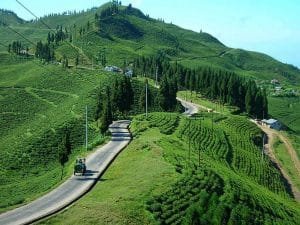Eastern Nepal is known for its stunning landscapes, rich biodiversity, and unique cultural heritage. Among its hidden gems, the tea gardens stand out as a must-see destination for travelers seeking a peaceful retreat, natural beauty, and an authentic Nepali experience. The tea-producing regions of Eastern Nepal, particularly in the areas of Ilam, Dhankuta, and Taplejung, offer travelers a serene and immersive experience with lush tea plantations, scenic views of the Himalayas, and the opportunity to learn about the art of tea-making from local producers.
The Tea Growing Regions of Eastern Nepal

Ilam: Ilam, often referred to as the “Tea Capital of Nepal,” is a scenic hill district in the eastern part of the country, blessed with vast tea gardens. The lush green landscapes, coupled with misty mountains in the background, create a picturesque setting for tea cultivation. Ilam is home to several well-established tea estates, such as the Kanyam and Fikkal tea gardens. The region’s high-altitude climate, rich soil, and frequent rainfall create the ideal conditions for growing tea, particularly varieties like black tea, green tea, and white tea.
Dhankuta: Dhankuta, located in the eastern hills of Nepal, is another region known for its tea plantations. Tea farming has gained popularity in this district over the years, and the plantations in this area produce fine quality tea that is exported globally. The steep terrains of Dhankuta offer an opportunity to walk through tea gardens, take in panoramic views of the surrounding mountains, and immerse oneself in the traditional tea production process.
Taplejung: Further to the northeast of Ilam lies Taplejung, another tea-growing district with picturesque tea estates. While Taplejung is more famous for trekking to Kanchenjunga, Nepal’s third-highest peak, it is also home to a few tea estates, especially in areas like Suketar and Pathibhara. Taplejung’s tea gardens provide a more remote and untouched experience, where visitors can enjoy the solitude and natural beauty of the region.



